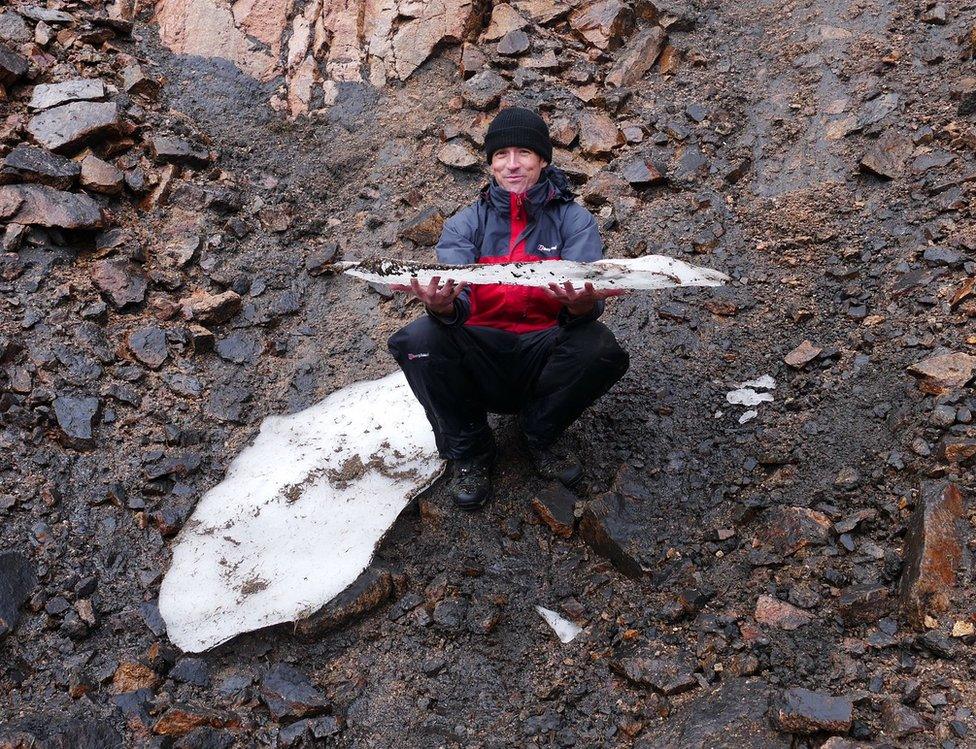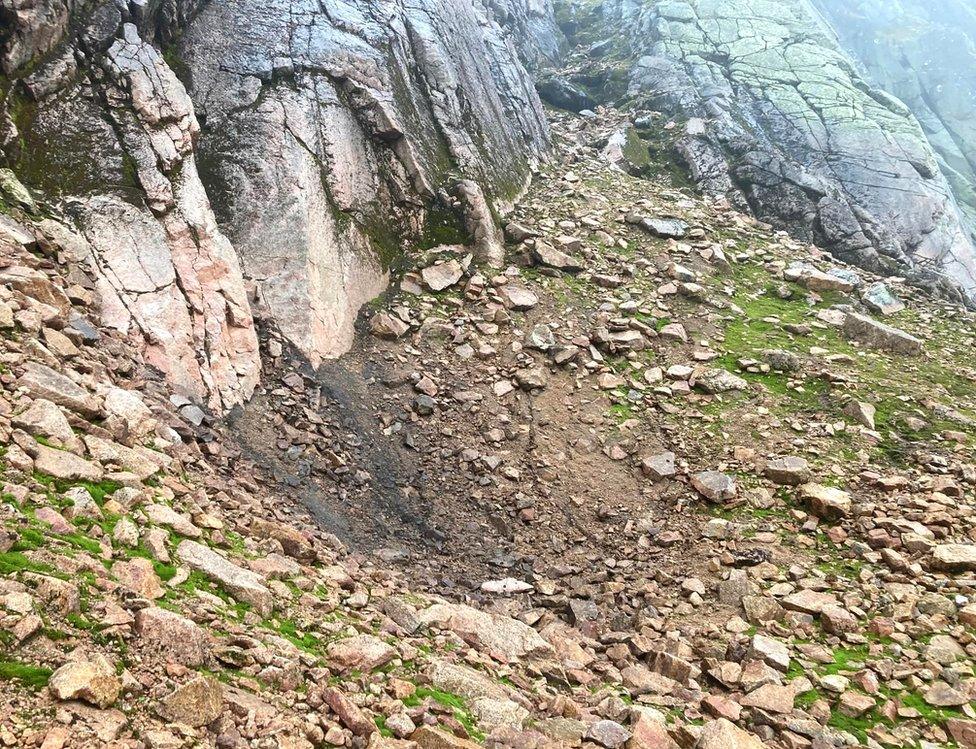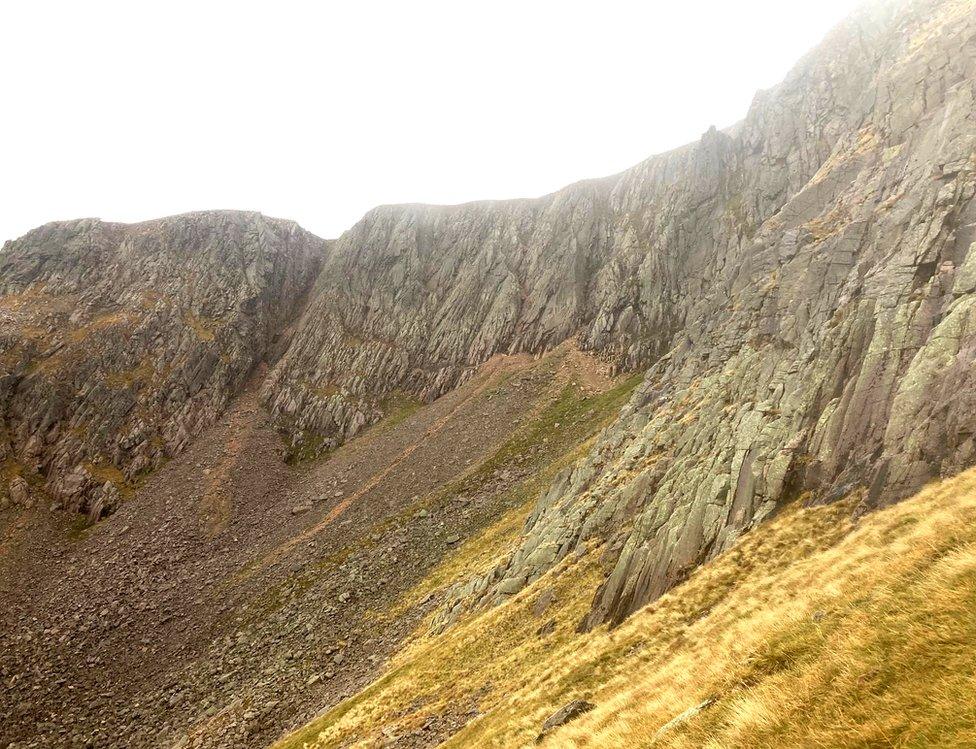Scotland 'snow-free' as Sphinx patch melts again
- Published

Snow expert Iain Cameron and the last remnants of the snow patch before it melted back in 2017
Scotland is completely snow-free again after a well-known patch melted for the fourth time in six years.
The Sphinx, in the Cairngorms, is historically the longest-lasting patch of snow in the UK.
Snow expert Iain Cameron reported via social media on Friday that the famous patch had disappeared in the previous 24 hours.
It had only melted nine times in the past 300 years. Mr Cameron said climate change was a likely factor.
The Sphinx, on remote Braeriach, a 1,296m (4,252ft) Munro, has melted away more frequently in the last 18 years.
According to records, it previously melted fully in 1933, 1959, 1996, 2003, 2006, 2017, 2018, 2021 and now 2022.
Before 1933, it is thought to have last melted completely in the 1700s.

A picture taken on Friday shows the Sphinx snow patch is gone
Mr Cameron tweeted: "So there we have it. It is confirmed that Scotland is snow-free yet again.
"The last patch, the Sphinx, disappeared sometime in the last 24 hours. "
He added: "I'm not a climatologist (nor even an academic), but it's a pretty obvious direction of travel.
"The future for semi-permanent snows in Scotland looks bleak."
Allow X content?
This article contains content provided by X. We ask for your permission before anything is loaded, as they may be using cookies and other technologies. You may want to read X’s cookie policy, external and privacy policy, external before accepting. To view this content choose ‘accept and continue’.
Just six days ago he had made the climb to check on the patch and described it as "hanging on for dear life."
Mr Cameron, based in Stirling, has been studying snow patches in Scotland for 25 years and is author of the book The Vanishing Ice, which he describes as a "lament" to snow and ice that lingers high in Scotland's hills.
He worked alongside the late Dr Adam Watson, a biologist dubbed Mr Cairngorms because of his many years studying the mountains.
Some of Dr Watson's research on the Sphinx drew on information handed down by generations of people who worked and visited the Cairngorms.

Garbh Choire Mor is usually described as Scotland's snowiest corrie but it is now snow-free
The Scottish Mountaineering Club began noting the fortunes of the patch in the 1840s and more recently scientists and ecologists have gathered information.
Separately from Mr Cameron's research, a report commissioned by Cairngorms National Park Authority , external and published in July 2020 said declining snow cover, and fewer days when it snowed had been observed on Cairngorm mountain since the winter of 1983-84.
Researchers also noted a trend for increasingly warmer weather since the 1960s, and suggested that by the 2080s there would be some years with very little or no snow at all on Cairngorm.
The Sphinx lies in Garbh Choire Mor, a hollow known as a corrie formed by ice or a glacier during the last ice age.
Garbh Choire Mor is described as Scotland's snowiest corrie because of the amount of snow it can hold even through summer months.
The Sphinx is the name of a climbing route near the snow patch.